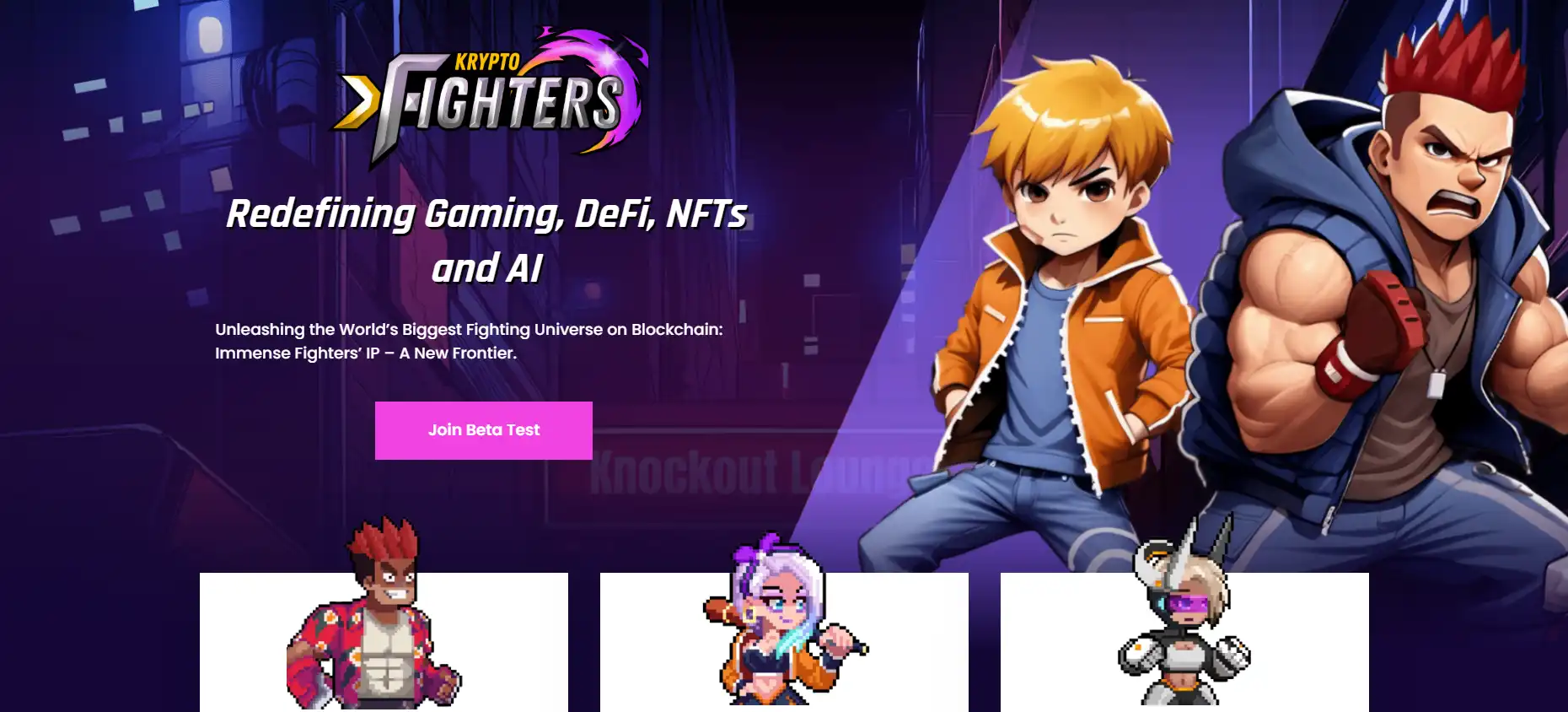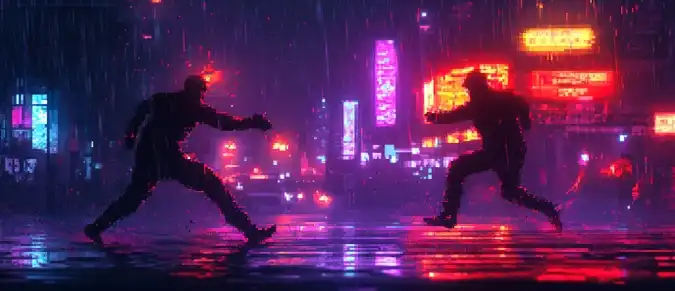Krypto Fighters is a blockchain project that combines tactical turn-based battles, collectible NFT characters, and a full-fledged Kryptopolis metaverse. Using the capabilities of Polygon, the game builds a sustainable Web3 economy where asset ownership, participation in DAO, and infrastructure development have real value. The project brings together strategy, character progression, a training system, and interaction with digital real estate.
- Concept and architecture of the Krypto Fighters project
- NFT fighters and the internal ecosystem
- Game modes and key mechanics
- Economic model and tokenomics of Krypto Fighters
- Community and the role of DAO
- Conclusion

Concept and architecture of the Krypto Fighters project
Krypto Fighters brings together gameplay, a metaverse, and the Web3 economy into a single ecosystem. The central element of the world is Kryptopolis — a digital city where players own land, buildings, infrastructure objects and participate in economic processes. The project operates on the Polygon blockchain, ensuring low fees and fast transactions, making NFT assets accessible even to beginners.
The game architecture is based on the interaction of multiple elements: fighters, training systems, arenas, land plots, in-game resources, and DAO mechanics. The developers aim for a sustainable P2E model where asset value is maintained through utility rather than speculation. This approach allows players not only to participate in battles but also to create long-term strategies for developing their collections and infrastructure.
NFT fighters and the internal ecosystem
NFT fighters are the foundation of Krypto Fighters and are presented as unique Polygon tokens. Each character has a set of attributes — health, attack, defense, speed, and willpower. These parameters determine their behavior in turn-based battles and shape their individuality.
The game features several fighter classes: All-Rounder, Duelist, Bodyguard, Stalker, Acrobat, Destroyer, Brawler, and Trickster. Each class has its strengths and weaknesses, affecting team composition and overall battle strategy.
The Coaching mechanic allows a max-level fighter to “train” a new character, creating an additional NFT asset. This supports collection growth and helps regulate the release of new tokens. In addition to fighters, the internal ecosystem includes land plots, buildings, and inventory items, all of which are used in Kryptopolis and provide practical advantages or income to their owners.
Game modes and key mechanics
The gameplay of Krypto Fighters is built on a combination of tactics, resource management, and gradual fighter progression. Each mode supplements the overall progression loop, allowing players to choose a preferred playstyle — competitive, exploratory, or strategic. Before moving to the list, it's important to note that all game systems are interconnected and form a unified flow. Krypto Fighters gameplay combines strategy, leveling, and tactical decision-making. The main functions are presented below:
- Adventure Mode (PvE) — exploring Kryptopolis, completing missions, obtaining rewards.
- PvP battles — fights between players, ranking structures, and competitive events.
- Tournaments — seasonal competitions with prize pools.
- Coaching — creating new fighters through mentoring.
- NFT rental — earning a share of rewards by lending fighters to other players.
- Working with land and buildings — developing metaverse objects and generating revenue.
These mechanics create a dynamic structure where battles, character progression, and interaction with infrastructure constantly intersect. As a result, players can grow their assets in multiple ways and adjust their strategy as their collection evolves. This flexible design caters to different player types and increases long-term interest in the ecosystem.
Economic model and tokenomics of Krypto Fighters
The economy of Krypto Fighters is based on the interaction of the $KF token, NFT assets, and digital infrastructure. Before the table, it’s important to emphasize that revenue generation is distributed between combat activity, asset ownership, and the development of Kryptopolis. This approach offers multiple participation paths for players.
Below are the key elements of the economic model:
| Element | Description | Earning Potential |
|---|---|---|
| $KF Token | Main ecosystem currency | Staking, DAO, in-game rewards |
| NFT Fighters | Playable characters | Sales, rental, battles |
| Coaching | Creating new fighters | New NFT asset |
| Land | Plots in Kryptopolis | Passive income, rental |
| Infrastructure | Arenas, training and service facilities | Player service commissions |
| Tournaments | Competitive events | Prize tokens |
After the table, it's important to highlight that these systems are interconnected: fighter demand supports the NFT market, city development increases land value, and the Coaching system regulates character emission. This creates a more stable and balanced in-game economy.
Community and the role of DAO
The community plays a key role in Krypto Fighters, as users are both asset owners and active participants in governance. DAO allows players to influence gameplay development, Kryptopolis infrastructure, and reward distribution rules. This transparency strengthens engagement and long-term retention.
Kryptopolis operates as a digital city where users manage their properties, create services, and participate in building the economy. The scholarship system encourages new players to join by sharing assets and distributing revenue between owners and participants.
Conclusion
Krypto Fighters combines tactical gameplay, collectible assets, and Web3 economics into a cohesive ecosystem. NFT fighters, the Coaching system, digital real estate, and DAO governance form a multi-layered participation model where players directly influence the development of the metaverse. The project stands out through its mix of strategy, progression, and on-chain interaction, making it appealing to both gamers and asset holders.
An additional advantage is the modular structure of Kryptopolis, enabling growth across multiple directions — from battles to city management. This flexibility makes the ecosystem resilient to market changes. However, the future success of the project will depend on community activity, consistent updates, and maintaining economic balance.




